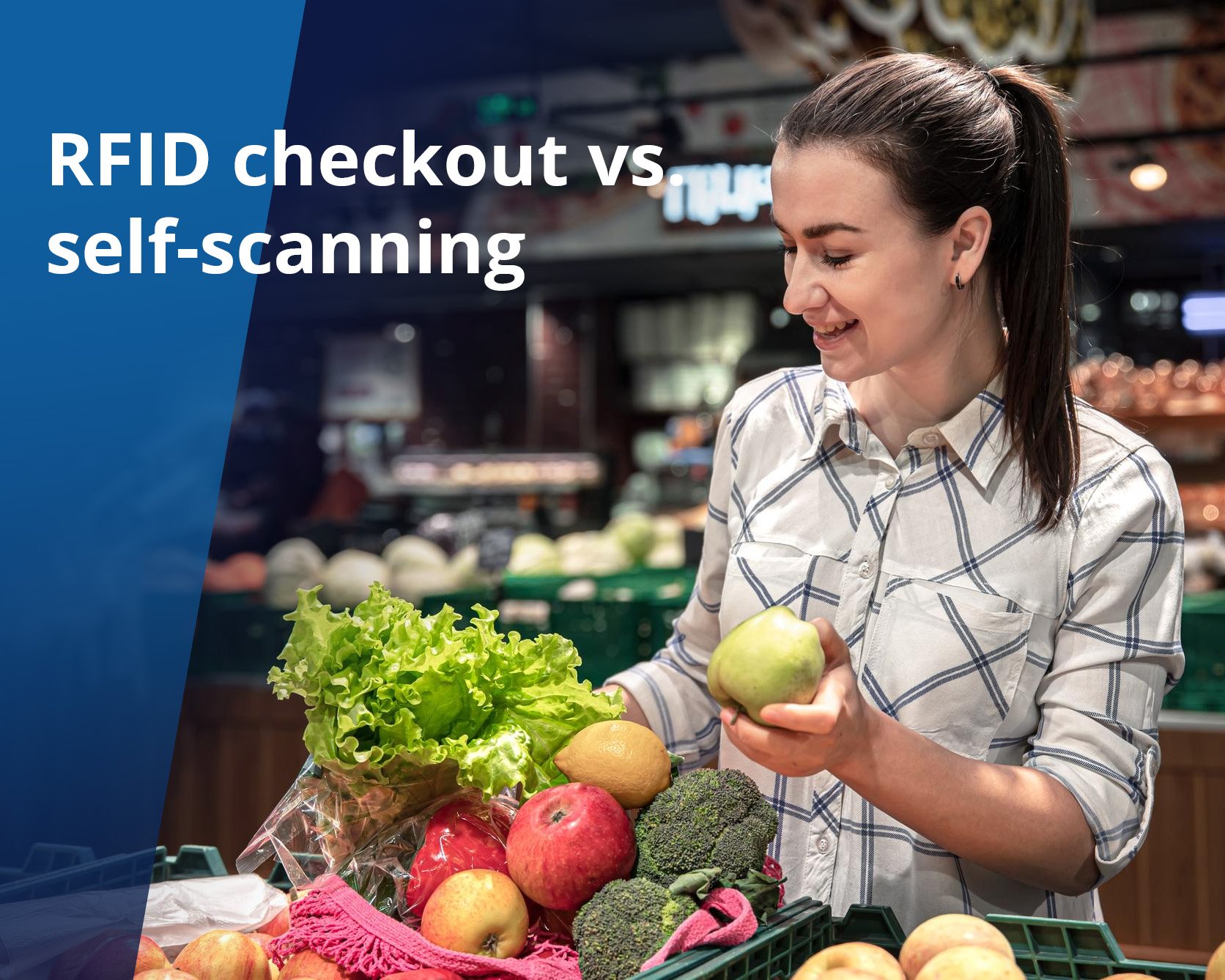
Frequently asked questions about RFID in retail
Common questions about RFID in retail
RFID has been around for several decades, but in recent years it has become increasingly popular in retail for a variety of purposes. Here are some of the most common questions about RFID in retail.
What does RFID mean?
RFID (Radio Frequency Identification) is a wireless communication technology used to identify, track, and manage items by transmitting data via radio waves. It can be used to track and trace objects, as well as to send or recieve data.
How does RFID work?
At the core of an RFID system are RFID tags, antennas, and readers (scanners):
RFID tags are small devices attached to products or packaging. Each tag contains a tiny chip and antenna, and it holds a unique identifier or additional product information.
Antennas emit radio signals that activate the tags when they come into range.
RFID readers receive the signals sent back from the tags and transmit the data to a central software system or database.
When a tagged item comes close enough to an RFID reader, the reader activates the tag and retrieves the stored information, which is then logged and processed in the backend system.
How does RFID chips work?
RFID chips, also known as RFID tags, are small integrated circuits - they are used to store and transmit data using RFID (radio frequency identification). They consist of a microchip and an antenna - which is used to transfer data to a RFID reader.
How does RFID scanners work?
RFID scanners, also known as RFID readers, are used to detect nearby RFID tags. Depending on the setup, each tag can contain different types of information. RFID scanners can be placed at checkout stations for RFID-based checkout, or integrated into RFID portals to scan inventory as it passes by.
What data does RFID send?
The type of data stored and transmitted depends on the user case. For example:
Inventory management: Product ID, SKU, batch number, or expiration date
Loss prevention: Entry/exit timestamps or movement within the store
Environmental monitoring: In more advanced RFID systems, tags can also transmit data about temperature, humidity, or shock exposure—especially useful for perishable goods or sensitive electronics.
What is RFID used for in retail?
RFID is used for several purposes in retail, including inventory tracking, monitoring environmental conditions such as temperature, and registering items at checkout. It plays an increasingly important role in retail, enabling faster, more accurate inventory management and streamlined checkout experiences.
How does RFID in retail work?
RFID in retail usually means that RFID tags are attached to products and packages, and scanned in order to get real-time information. This can be used for various purposes, from checking inventory status to scanning products at checkout.
What is the difference between RFID-checkout and self-checkout?
RFID checkout is a type of self-checkout, as it involves the shopper being responsible for scanning—or rather, registering—their own items at the checkout.
However, the term “self-checkout” is typically used in the context of barcode scanning, not RFID scanning.
The main difference lies in the technology used:
RFID checkout uses RFID technology to automatically register items via radio frequency.
Traditional self-checkout relies on barcode scanning, where each item is manually scanned by the shopper.
What are the benefits of RFID in retail?
One of the main benefits of RFID in retail is that it doesn't require a clear line of sight to scan items. Unlike barcodes, which need to be visible to a scanner, RFID tags can be read automatically—even if they’re inside a box, under other items, or not directly visible—with a few exceptions depending on the material of the item or packaging.
What are the drawbacks of RFID checkout?
One limitation of RFID checkout is the restricted size of the scanning area. Most systems only allow a certain number of items to be placed within this area at a time. Additionally, bulky or heavy products can be difficult to position correctly, as the scanning zone is typically shaped like a box or confined enclosure.


